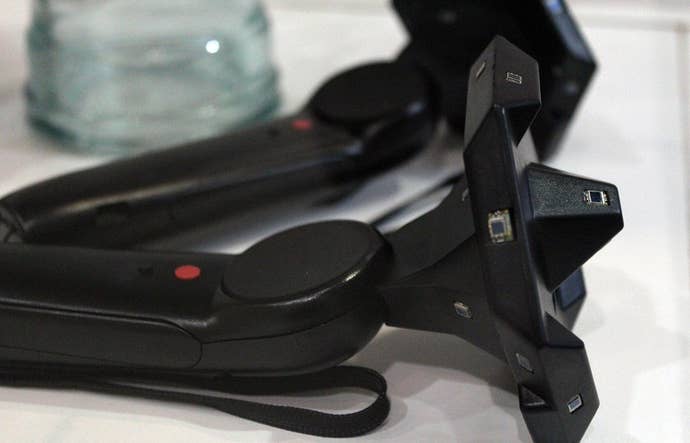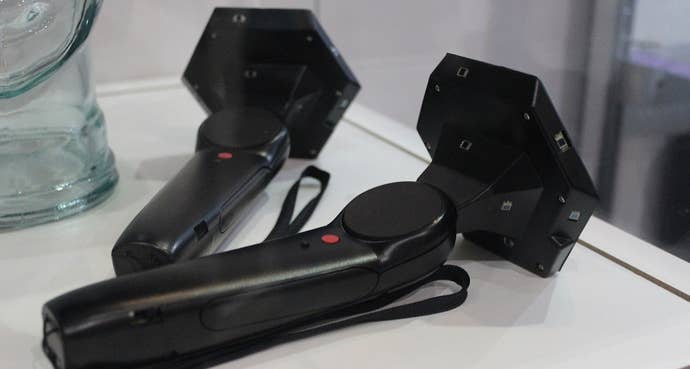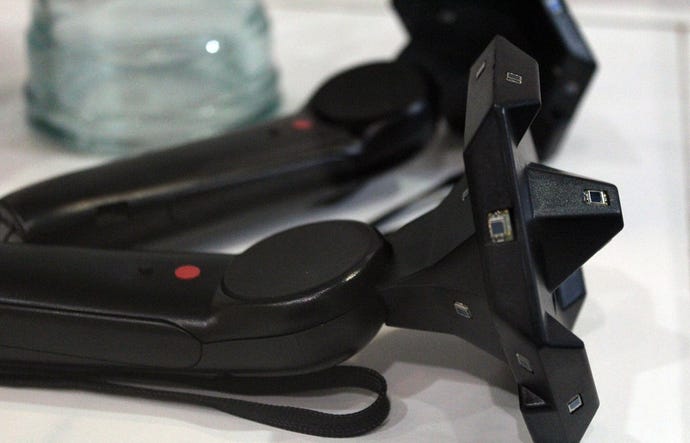Valve's Lighthouse, VR controllers and more explained
Valve's less-talked about prototype VR controllers and its Lighthouse technology have been shown in more detail.
When HTC announced Vive, the VR headset it's working on with Valve, it mentioned "base stations" and ergonomic controllers. Now we know what they meant by that.
The controllers are still in prototype phase, and will look better when it comes time for a commercial release. They won't be releasing alongside Vive either.
The controllers are designed to be held in a way that's not entirely unlike Sony's Move peripheral. Each controller has a trigger, trackpad, buttons, and a grip that detects squeeze presses. The controllers will also be tracked in-game, you'll be able to see them in your hands, in game, if you look down.
The controllers, together with the base stations, dubbed Lighthouse, will help the user touch items in the game and replicate a sense of place not found in other VR headsets. Lighthouse is also in prototype phase.
Each station has 32 sensors that track the user's body and translates it into the virtual environment. The idea, according to Valve, is for users to be able to bring any item and have it tracked in-game. Valve's Gabe Newell is calling it the "USB" vision, referring to how USB is a universal standard regardless of the device.
To help make this a reality, Valve will be giving it away for free. "So we're gonna just give that away. What we want is for that to be like USB. It's not some special secret sauce," Gabe Newell told Engadget.
"It's like everybody in the PC community will benefit if there's this useful technology out there. So if you want to build it into your mice, or build it into your monitors, or your TVs, anybody can do it."
Newell added that while Vive will provide enough tracking for a person who's sitting, bigger challenges like having "ten people in a room moving around" is what lead to the creation of Lighthouse.
"So Lighthouse gives you that precision; it's not specific to the head-mounted display. We also use it for controllers, but you could use it for anything: You could put it on your tablets or your phones. It's tracking -- it happens that VR likes to use tracking and it's critically dependent on it."



Images via Gizmodo.

